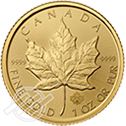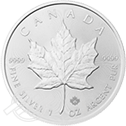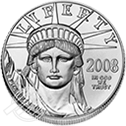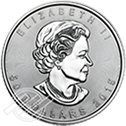401K Fees
Are Hidden FEES In Your Current Plan Funding Someone Else’s Retirement?
Imagine this scenario for just a moment…
You’re reviewing the latest statement for your 401(k) and a seemingly innocuous number catches your eye…
There are all sorts of fees for administration and record keeping and the entire time you’re trying to process these fees you can literally picture money flying out of your wallet and into someone else’s. Because the sad truth is according to a 2012 CNN report by Robert Hiltonsmith fees can “reduce your 401(k) balance up to 30%, regardless of whether you have $1 or $1 million in your retirement account.”
Plus we’re just talking about the fees on your statement YOU CAN SEE…
The numbers you see on your 401(k) statements are reporting net gains. That’s right…only the total funds in your account AFTER fees are sucked out of your 401(k). This literally means that fees for managing your investments are subtracted from your gains or added to your losses without you ever seeing them.
And what this means is there are hidden costs you never see or hear of. According to Kiplinger.com’s article “The High Cost of 401(k) Fees: How Much Are You Paying?”, administrative and record-keeping fees actually get “divvied” up amongst all the participants in a plan but are not explicitly listed on individual investment statements. Yes, “administrative” and “record-keeping fees”. This basically means that you have the privilege of paying fees for your plan to keep track of how much money you’ve handed over- often without even knowing it! …And this lack of transparency makes most 401(k) plans frustrating and COSTLY. The lack of transparency also explains why 80% of plan holders actually have no clue how much their plan’s fees are hurting their retirement.
BUT… you do have a huge measure of control over this situation. Know Your Enemy: Find Your FeesSo let’s talk about how you can become a pro at figuring out how to calculate and cut costs in your plan… First and foremost you need to know how to actually find the fees on your statement. Although this task can seem daunting, we have some helpful tips for you…
There are four basic types of costs that you must be aware of:
Direct Investment Expenses
Portfolio Management Fees
Operating Expense
Undisclosed or Hidden Costs
Direct Investment Expenses
Direct investment expenses, also known as “expense ratios,” can be found on your 401(k) plan website, or helpful financial sites like Kiplinger.com or Morningstar.com. Expense ratios are expressed as an annual percentage of your total investments and are different for each fund.
TIP: Grab your most recent 401(k) statement, find the expense ratio of each fund, and add the costs up to get your total annual direct investment expense!
Portfolio Management Fees
If your plan uses a broker or an investment consultant (many smaller plans do) you may be charged as much as 2% in portfolio management fees. 403(b) plans that most teachers and non-profit organizations participate in could also be laden with additional costs for mortality and insurance.
Operating Expenses
Many employees end up paying a share of the total operating cost of their 401ks. This is especially prevalent in smaller companies.
TIP: Get a copy of your plan’s annual summary. This can be provided by your plan administrator or the benefits office at your work. In section labeled “basic financial information” you can find the plan’s total expenses. The difference between the expenses and benefits paid is your plan’s net administrative/operating expenses. Divide the net operating expense figure by the total value of the plan and you’ll come up with the percentage for annual operating expenses.
Hidden Costs
Your plan may have a revenue sharing program that is literally funding your boss’s retirement. Sound scary? It is. Especially since these arrangements between the plan provider and individual mutual fund companies are seldom disclosed. These hidden costs can include commissions paid to plan providers to steer participants to higher cost funds within their 401ks or a back end deal of a rebate to the provider which eliminates operating expenses for the service provider but not for you as the participant.
To illustrate how these fees can eat away at your retirement let’s look at a $100,000 example. Let’s say a 401k provider charges 1% for management of a mutual fund with an expense ratio of 1.5%. Add an operating expense of .8% and you’re all the way up 3.3% annual in fees. That’s $3,300 a year, EVERY… SINGLE… YEAR!
You can see why Demos think tank policy analyst Robert Hiltonsmith stated “You can work as potentially hard as possible and play by the rules and still not be able to retire with some dignity.”
The Easiest Way To Avoid MASSIVE Fees
With the dizzying array of fees that you pay for your 401(k) there is a way to deeply reduce what comes out of your pocket.
If eligible, you can roll over your costly 401(k) into a Self-Directed IRA many of which have a flat fee structure and give you full control of your investment options. This can be done TAX FREE and PENALTY FREE!
An Advantage Gold IRA allows you to accumulate real wealth through ownership of physical gold and silver with the added benefit of flat fees! You can contribute to your IRA every year and pay the same low annual fee for the account and storage of your gold and silver. Avoid Ridiculous Percentage Based Fees NOW! After reading this your blood pressure is probably up a few points… and frankly, it should be. If you’re losing upwards of 30% of your money to petty and exorbitant fees we have a solution… With an Advantage Gold IRA you can protect your retirement, keep potential gains in your portfolio and MOST importantly pay simple flat fees. No more guessing how much you’re going to lose when your administrator decides to take more than his fair share…
In a matter of just a few minutes you can discover the power and protection of an Advantage Gold IRA.



